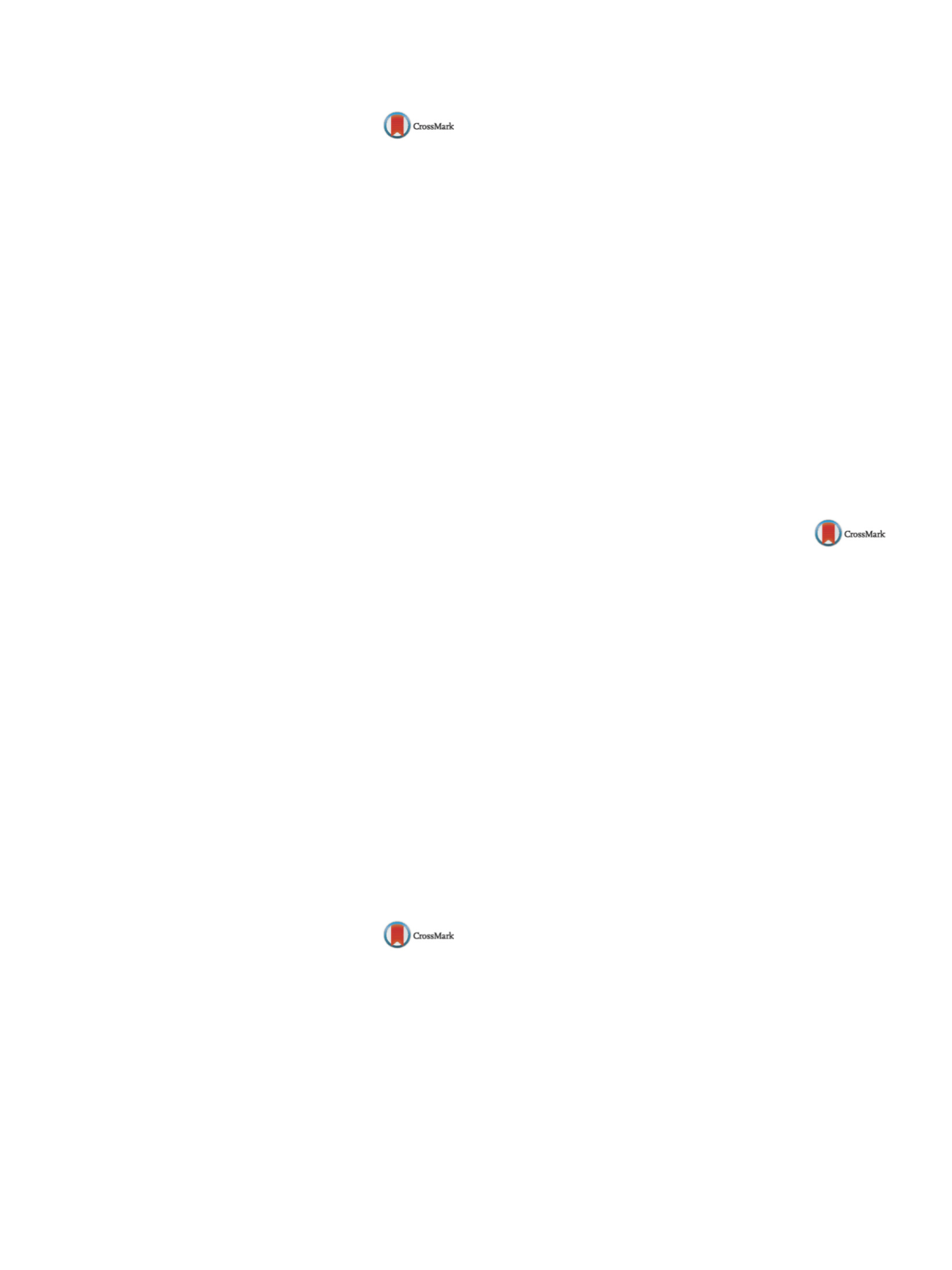

S818
25th European Congress of Psychiatry / European Psychiatry 41S (2017) S772–S846
EV1262
Morphophenotypical patterns in
patients with negative symptoms in
schizophrenia
E. Kornetova
1 ,∗
, A.V. Semke
2, A.N. Kornetov
3, E.G. Dmitrieva
1,
V.V. Dubrovskaya
1, N.A. Bokhan
21
Mental Health Research Institute, Tomsk National Research Medical
Center, Russian Academy of Sciences, Endogenous Disorders
Department, Tomsk, Russia
2
Mental Health Research Institute, Tomsk National Research Medical
Center, Russian Academy of Sciences, Administration, Tomsk, Russia
3
Siberian State Medical University, Faculty of Behavioral Medicine,
Department of Clinical Psychology and Psychotherapy, Tomsk, Russia
∗
Corresponding author.
Introduction
Positive-negative dichotomy in course of
schizophrenia leads to search for factors which could influ-
ence the formation of basic symptoms. The study of patients’
body types and morphological peculiarities according clinical
feature of schizophrenia could find some influence factors. Body
type and regional morphologic dysplasias (RMD) are basically
morphophenotypical patterns available for routine examination
in usual clinical psychiatric practice.
Aims
To reveal associations between body type, morphologic
dysplasias and course of schizophrenia.
Methods
Anthropometric, somatoscopy examination of patients
with schizophrenia with gradually progressive negative disorders:
emotional, volition, thought disturbances, increasing autism and
social isolation, stable anhedonia withmotivation defect were con-
ducted. The accounted morbidity of 168 patients from the whole
group of individuals with schizophrenia was about 10% (128 [76%]
males, 40 [23.8%] females). Clinical presentations of schizophre-
nia met the criteria of ICD-10. Anthropometric investigation was
conducted with the help of Martin’s anthropometer and major
thickness compasses for recognition of body type. RMD was reg-
istered descriptively.
Results
It was shown that in patients with negative course of
schizophrenia asthenic body type prevailed (60%) with the accu-
mulation of RMD (94,4%) in comparison with healthy individuals
(26.2%,
P
<
0.001). Among patients with positive symptoms of
schizophrenia picnic body type prevailed (P
<
0.001).
Conclusions
Asthenic body type, accumulation of multiple RMD
is associated with the domination of negative symptoms and
continuous course of schizophrenia. Results of the study indi-
cate the need for a deeper study of this issue on constitutional
approach.
Disclosure of interest
The authors have not supplied their decla-
ration of competing interest.
http://dx.doi.org/10.1016/j.eurpsy.2017.01.1592EV1263
Comparison of cortisol levels in
patients with schizophrenia and in
healthy controls
K.M. Wilczy ´nski
1, D. Tobolska
1, M. Lorek
1, E. Mazgaj
1,
A. Gawlik
2, K. Krysta
1 ,∗
1
Medical University of Silesia, Department of Rehabilitation
Psychiatry, Katowice, Poland
2
Medical University of Silesia, Department of Pediatrics- Pediatric
Endocrinology and Diabetes, Katowice, Poland
∗
Corresponding author.
Introduction
The hypothalamus-pituitary-adrenal axis (HPAA)
plays a pivotal role in response to a range of external and
internal factors often described as “stress”. Growing evidence in
a literature, suggest various dysregulations of HPAA, in course
of numerous mental disorders. Patients with schizophrenia and
bipolar disorder seem to have elevated basal cortisol secretion,
what might be caused by the diminution of glucocorticoid recep-
tors’ amount. It was of the interest if the cortisol concentration
in patients, with diagnosed schizophrenia, differs from healthy
individuals.
Materials and methods
Two groups of participants were included
into the study. First group (study) consisted of 10 patients with
diagnosed schizophrenia and control group which included 38
healthy individuals. Study was divided into two stages, first one
(pilot) included only control group, and utilized cortisol concen-
trations measurement from saliva, blood and 24 h urine sample.
Second part (main study) involved both groups although focused
on a salivary cortisol concentrations.
Results
A mean salivary cortisol concentration in patients with
schizophrenia who underwent treatment was significantly lower
in comparison with healthy individuals.
Conclusions
Obtained results indicate that patients who under-
went a treatment, and does not present notable clinical signs of
schizophrenia, may havemoderately lowered levels of salivary cor-
tisol. This may be a reflection of relenting psychotic symptoms as
well as a direct effect of atypical antipsychotic drugs on a HPA axis
activity.
Disclosure of interest
The authors have not supplied their decla-
ration of competing interest.
http://dx.doi.org/10.1016/j.eurpsy.2017.01.1593EV1264
Association between
GRM3
gene
polymorphisms and response to
treatment in Moroccan schizophrenic
patients
H. Lagouaiti
1 ,∗
, G. Zairy
1, H. Charoute
2, R. Somali
1, N. Atouche
1,
A. Elalaoui
3, O. Battas
1, M. Agoub
11
Faculty of Medicine and Pharmacy, Hassan II University of
Casablanca, Laboratory of Clinical Neuroscience and Mental Health,
Casablanca, Morocco
2
Institut Pasteur, Human Molecular Genetic Laboratory, Institut
Pasteur, Human Molecular Genetic Laboratory, Casablanca, Morocco
3
Centre National pour la Recherche Scientifique et Technique,
Human Molecular Genetic Laboratory, Casablanca, Morocco
∗
Corresponding author.
Objective
The aim of this study is to evaluate the association
between response to treatment inMoroccan schizophrenic patients
and
GRM3
gene polymorphisms.
Method
We have genotyped three SNPs of
GRM3
gene
(rs1989796, rs1468412, rs1476455) in 33 Moroccan schizophrenic
patients. We assessed the severity of symptoms using Posi-
tive and Negative Symptoms Scale (PANSS) and Brief Psychiatric
Rating Scale (BPRS) during two months of antipsychotics
treatment.
Results
The result revealed a positive change in PANSS negative
symptoms in patients with rs1468412SNP and a difference in allele
frequency of rs1989796SNP between responders and nonrespon-
ders to treatment.
Conclusion
Our data indicate that rs1468412 and rs1989796
GRM3
gene polymorphisms play a role in response to schizophrenia
treatment.
Disclosure of interest
The authors have not supplied their decla-
ration of competing interest.
http://dx.doi.org/10.1016/j.eurpsy.2017.01.1594

















